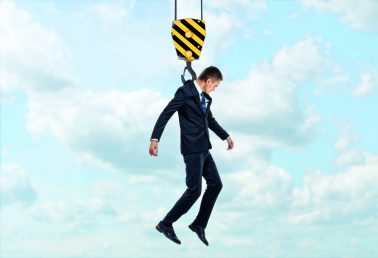Protecting construction site visitors, including uninvited ones

Construction sites can be a health and safety nightmare, with multiple hazards to be identified and managed.
Key statistics issued by the HSE show that 40 fatal injuries to construction workers were recorded for 2019/20, accounting for the largest share of work-related fatalities. The three most common causes of fatal injuries continue to be; workers falling from height (29), being struck by a moving vehicle (20) and being struck by a moving object (18), accounting for 60 per cent of all fatal injuries.
Responsible employers are aware that they have a duty of care to employees and site visitors, and manage their site effectively through scrupulous risk assessment and accident prevention procedures.
One such measure is the rigorous training of employees with regard to safe working practices. But what about those untrained members of the public who enter the site uninvited?
Increased trespassing
Trespassing incidents have steadily increased over the last five years, leading to an increase in injuries and fatalities amongst members of the public. Social media, for example, has seen an explosion in thrill-seekers, or ‘urban explorers’, keen to capture images of the skyline from ‘unexpected angles’ or to post footage of themselves parachuting from rooftops, or dangling from tower cranes. Other ‘trespassers’ can include adventurous children in search of a new playground, or a passer-by simply looking for a short cut.
While serious injury is tragic for those doing the trespassing, these accidents may also carry financially devastating liabilities for the landowners. A number of large construction and development companies have begun taking out injunctions through the High Court to cover their sites, since, without an injunction, trespassing is generally not considered a criminal offence.
Site safety and the law
Landowners’ liability to trespassers is encompassed in the Occupier’s Liability Act 1984. Landowners have a duty of care to anyone who is on their site, whether authorised or unauthorised. This means that if your worksite has not taken the necessary steps to deter and/or ensure the safety of trespassers, you as a landowner could be prosecuted, especially where negligence is evidenced.
While this legislation may seem unfair, there are a number of steps that employers can and should take to reduce the risk of injury. The HSE has issued a series of guidelines to encourage construction companies to improve site safety for the public and help to deter trespassers.
Major areas of concern for construction site safety
Below are the top health and safety concerns relating to construction sites, along with information about how to mitigate the impact of these hazards. Highly visible construction site safety signage is essential in all of these instances.
- Trespassing – the most effective way to reduce injury to unauthorised visitors is to prevent them from entering the site in the first place. This means increased security measures on site boundaries, including CCTV cameras and alarms, safety barriers, anti-climb fencing and other solutions to deter trespassing and reduce malicious damage such as theft and arson.
- Openings and holes – holes, gaps and openings in a worksite should be properly fenced off and guarded to prevent falls. Warning signs should be present to indicate the hazard to employees and other visitors.
- Falling objects – these are one of the leading causes of injury on UK construction sites. All employees and invited visitors should be equipped with the correct PPE, and safety equipment such as scaffolding netting and chutes should be installed to manage waste or falling debris.
- Vehicles – moving vehicles and heavy lifting equipment may present a hazard to passers-by. It is essential to have on site a number of portable signs to manage traffic flow.
- Dangerous materials – these can include heavy building materials, sharp metal objects, wires and even flammable materials. Arrangements should be in place to dispose of waste products responsibly.
- Slips, trips and falls – again it is imperative that you use both protective barriers and effective safety signage to indicate the hazard. In certain circumstances it may also be necessary to build a pedestrian walkway around the site.
- Noise – although difficult to avoid, noise levels can be a major cause for distress. It is therefore important to follow the local noise ordinances closely.
- Dust – water is typically used to control dust levels.
- Dangerous equipment and machinery – operators of heavy equipment and site machinery should be trained to use and store equipment safely and to follow all mandatory safety protocols. Other mitigation measures may include anti-climb equipment on tower cranes.
For more information visit the HSE’s website for a free-to-download copy of its ‘Protecting the public: Your next move’ guidance.
